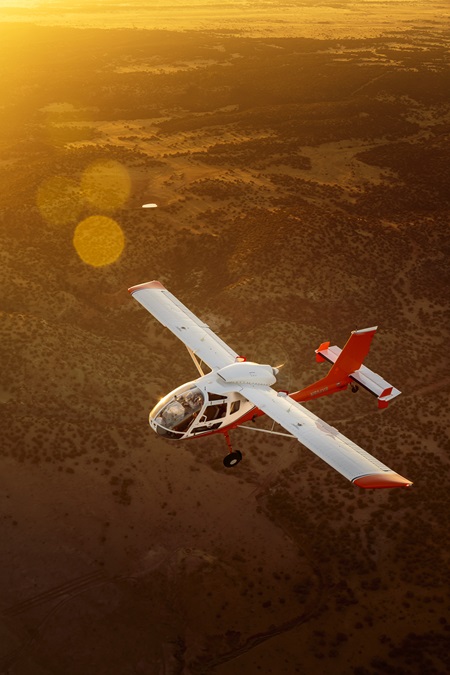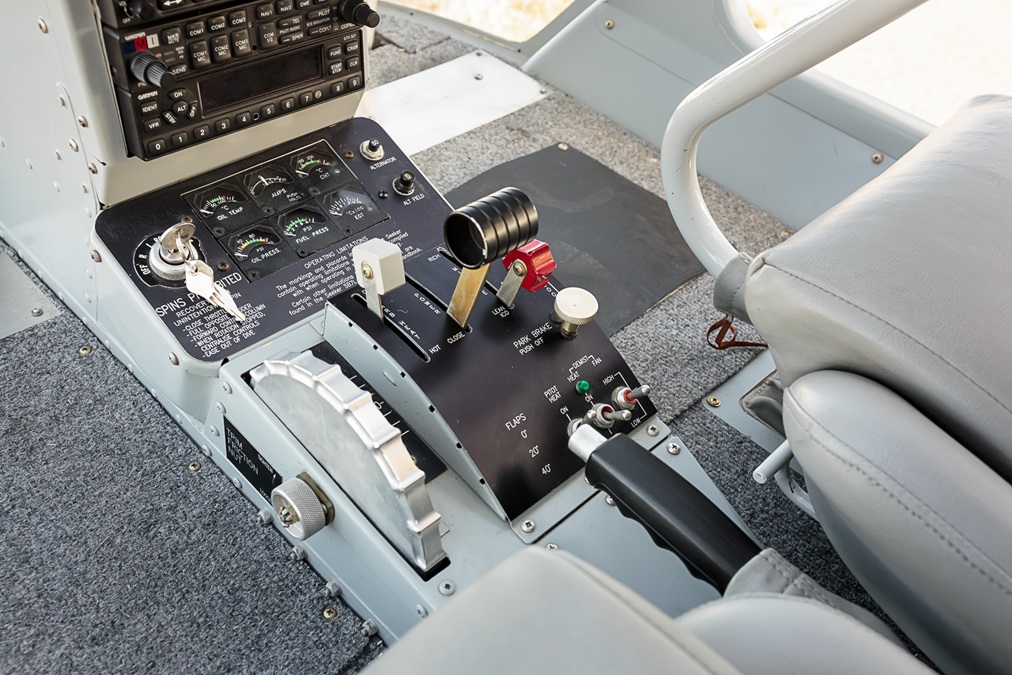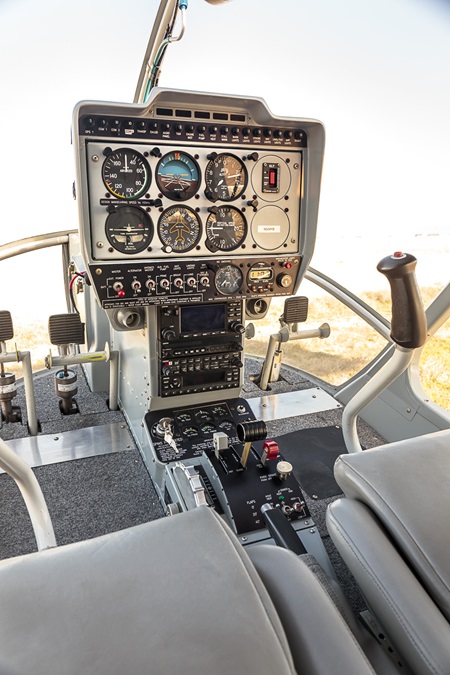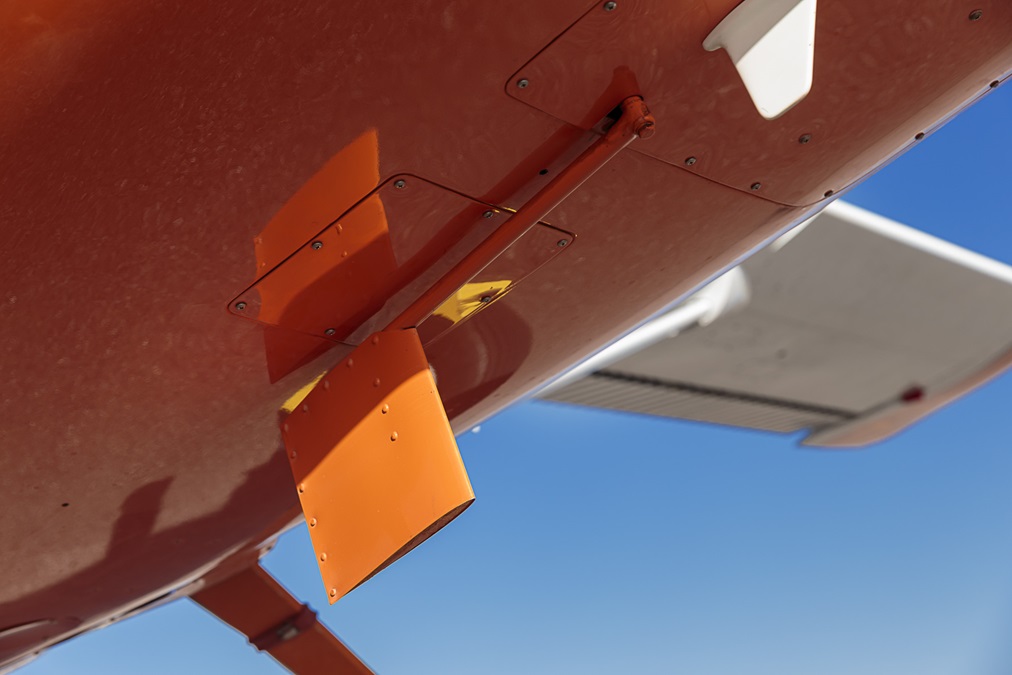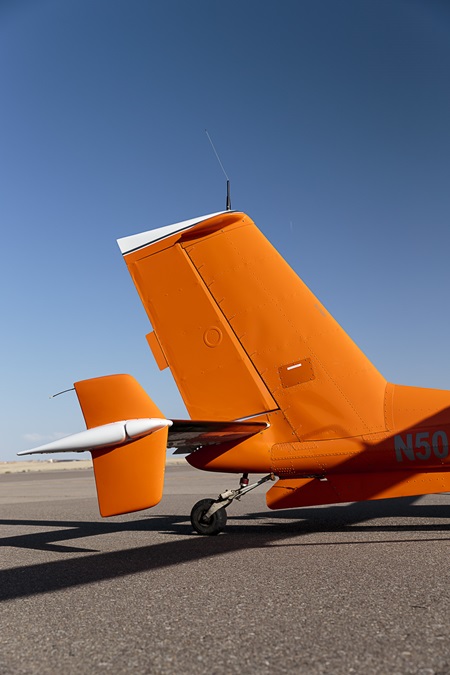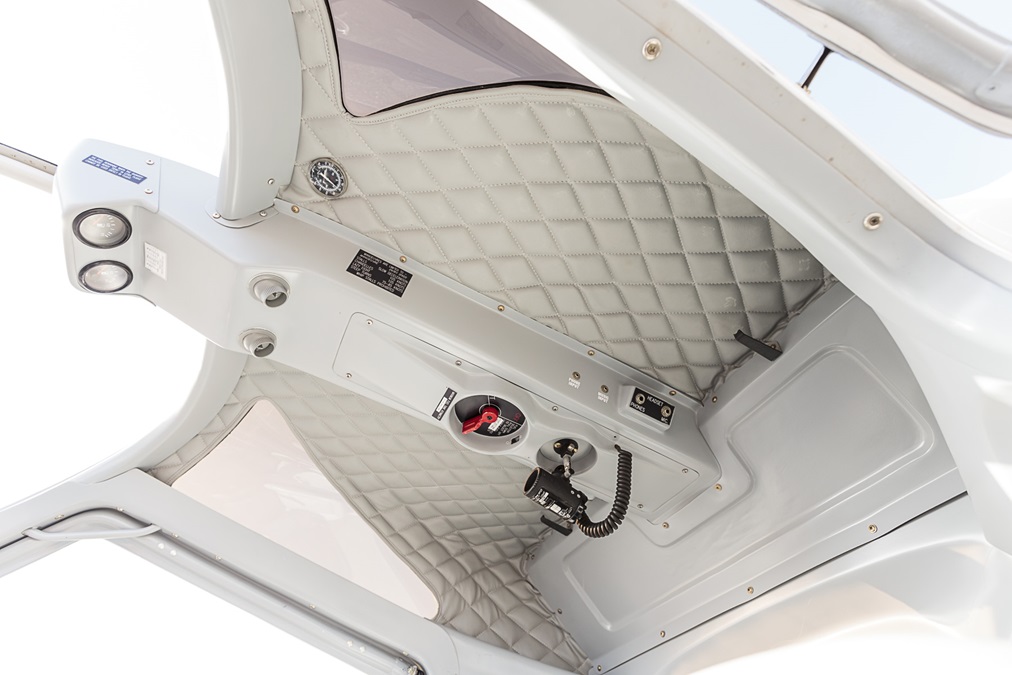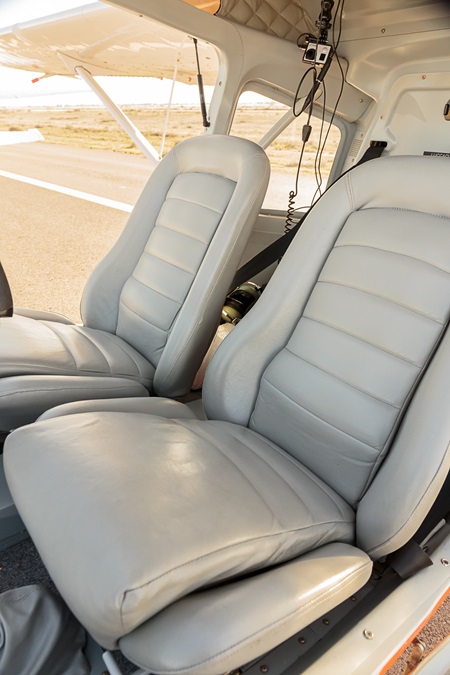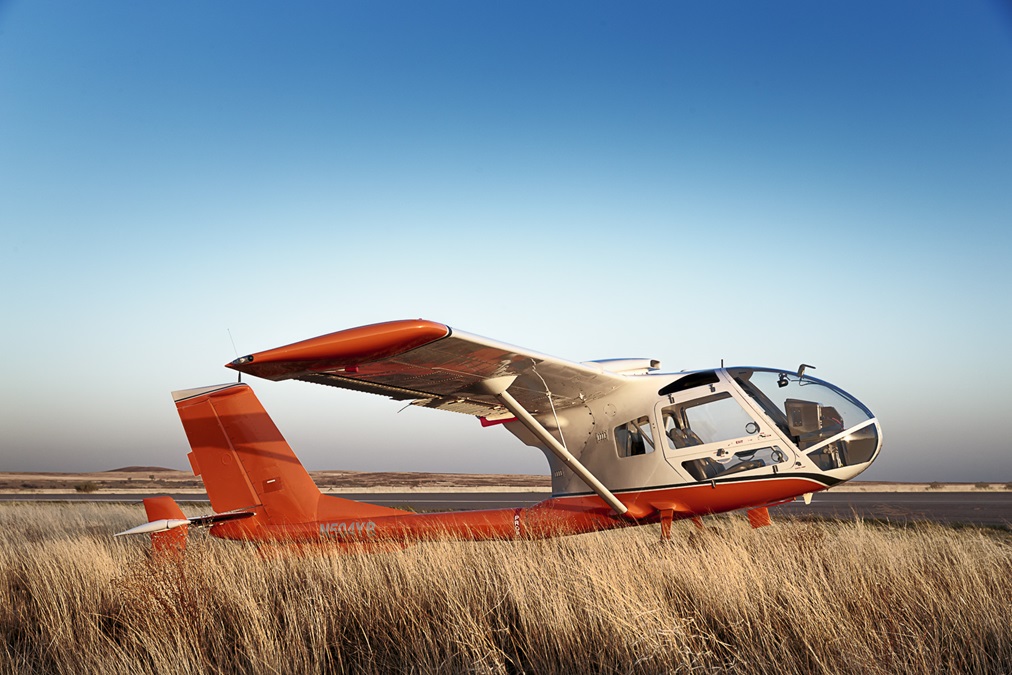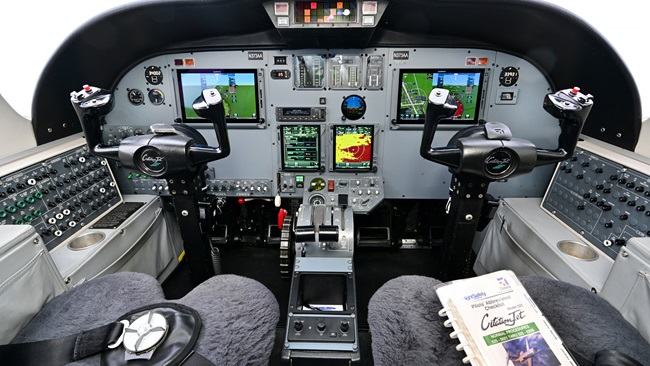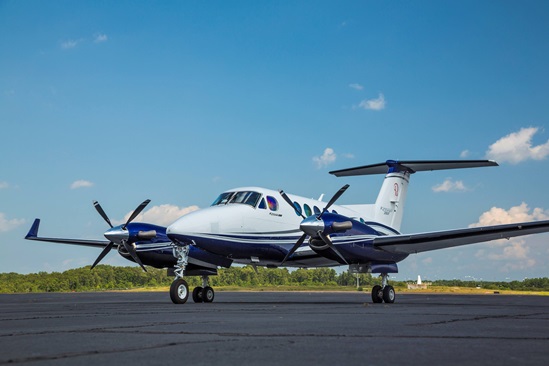Seeker and ye shall find
Looks like a helicopter, flies like an airplane
When retired Marine Col. Allen E. Weh spotted a Seeker on the ramp in Jordan on his way to Iraq, he instantly knew its purpose. He took a quick ride with the pilot and was impressed enough that years later, when Australian manufacturer Seabird Aviation hit a rough financial patch, he bought the business and added it as a branch of his air service company in Albuquerque, CSI Aviation. The FAA approved the Seeker under an international reciprocal agreement on June 7. Erickson, maker of the flying crane, will become the North American Seeker manufacturer.
As the aircraft was parked behind a hangar one day with only its bulbous nose visible from around the corner, a nearby pilot asked if it was a helicopter. That’s exactly how it is marketed: a helicopter with wings that is less expensive to operate. Of all the aircraft on the Moriarty Airport 30 miles east of Albuquerque, visiting kids ran straight to the Seeker, ignoring all others.
The Seeker is tough, almost tank-like. Entering the cabin is like boarding a Piper Cub—pilot’s rear end in first, then lower the head, collect the legs and place everything in the cockpit. Once inside there’s plenty of room for all those body parts without bumping into the pilot in the other adjustable seat. You’re in a fishbowl made of windows.
The $449,500 A model has a 168-horsepower Lycoming O-360 engine good for altitudes from sea level to 8,000 feet, but the $484,500 A2 (see spec sheet) has a 210-horsepower Lycoming IO-390. The A was at a disadvantage in New Mexico—a mile-high state—where it has slower speeds and climb rates. The two aircraft are essentially identical except for the engine.
David Pohlman, president of CSI Aviation subsidiary Seeker Aircraft, is constantly busy with demonstration flights but knows he is at a disadvantage using an A model. While the derating of the engine allows use of mogas, it is frequently flown from Moriarty Airport, where the elevation is more than 6,000 feet. Any normally aspirated aircraft is a bit anemic at that altitude, and the 2,100-pound Seeker is no exception. During a flight out of Moriarty Airport, the Seeker A saw a climb rate of 350 feet per minute and sometimes less when climbing from 8,000 to 9,500 feet.
That’s why the New Mexico State Police have reworked their Seeker’s engine to increase it from 168 horsepower to 215 horsepower. They have used a donated A model Seeker based at Santa Fe, with its 7,000-feet-plus elevation, to search for a child, although it also can watch for bad guys for six hours without refueling. A new three-blade MT propeller was included in the modification. The belly has been fitted with a mounting bracket for a forward-looking infrared camera to aid in search missions, although the camera has not yet been mounted. Officials want to make sure their pilots are well experienced with tailwheel landings before risking the belly-mounted camera. Another change was to move the pilot–in-command position from the left seat to the right, as in a helicopter. That way state police helicopter pilots will find it easier to transition between helicopter cockpits and the Seeker.
Does it win the battle against the helicopter? Not always. An official with the New Mexico State Police Aviation Section praised the Seeker for good visibility and low maintenance and fuel costs, but a helicopter can easily hover or land and drop off or pick up passengers. The official said a helicopter can operate in 45-knot crosswinds, while the Seeker is listed as having a 12-knot demonstrated crosswind capability.
What the Seeker does best is fly slow and solid, and that happens to be its mission. It refused to do anything unusual—or much of anything at all—during an aerodynamic stall. There was no sudden banking and no fuselage shudder. Steep turns with 20 degrees of flaps at 65 knots indicated airspeed kept the aircraft circling within the confines of the front and back yard of a rancher’s home. The A’s cruise speed is 101 knots true airspeed, while the A2 is promised to do 114 knots true airspeed.
A formation flight put the aircraft’s vaunted visibility to the test, if a bit unfairly. Looking up from beneath the lead Cessna 172, the overhead fuel gauges sometimes blocked the view. The wide metal door frames sometimes got in the way. But the Seeker’s job is to look down, and it does that very well, letting the pilot also look forward and down past the rudder pedals, much like a helicopter. A pilot may have to lean sideways slightly to reach the throttle, but it is easy to operate, even in formation with frequent power changes.
In a hands-off 300-foot-per-minute descent, the Seeker A remained stable, never dropping a wing in the calm 7 a.m. air. Trim is manual, but newer Seekers have electric trim. The aircraft remained level, hands-off, for at least two minutes. At that point it was time to enter the traffic pattern, and there wasn’t time to continue the stability test.
Tailwheel aircraft are supposed to require a lot of work during taxi, but no one told the Seeker. S-turns for visibility are unnecessary. Cables to the springs on either side of the tailwheel make it steerable while leaving a little free-castering effect. While taxiing was effortless in calm wind for a morning flight, whipping winds at 25 knots the previous evening proved more difficult. The winds made taxiing difficult only once, when the aircraft was to go left and the wind was pushing the tail to the left. Thanks to the round-tube fuselage, the wind had no fuselage to push on. By the same token, that tubular fuselage can be a disadvantage when trying to use a forward slip to lose altitude rapidly. A forward slip uses the side of the fuselage to increase drag, but except for the doors, the Seeker fuselage has no “side.”
Acceleration was slow on Moriarty’s 7,700-foot runway, as expected at an elevation of 6,204 feet. The aircraft uses 20 degrees of flaps for normal takeoff.
Landings are typical of a tailwheel aircraft. For wheel landings, approaches are made at 70 knots indicated with flaps at the full setting of 40 degrees. Power remains on until touchdown. For three-point touchdowns, the final approach speed with flaps at 40 degrees is 60 knots indicated. The throttle is reduced to idle at three feet and back-pressure is added until touchdown.
There are fewer than 30 Seekers in the world, including some in Africa. But with its coming upgrades, the big-eyed Seeker is primed to search for what it really needs: more sales.
Email [email protected]
Spec Sheet
Seeker SB7L-360A2
Base price: $484,500
Specifications
Powerplant | 210 hp Lycoming IO-390-A1A6
Recommended TBO | 2,000 hr
Propeller | 70 in dia 2 blade Bishton
Length | 23 ft
Height | 6 ft 7 in
Wingspan | 36 ft 4 in
Wing area | 141 sq ft
Wing loading | 15.2 lb/sq ft
Power loading | 10.2 lb/hp
Seats | 2
Cabin length | 3 ft 8 in
Cabin width | 3 ft 8 in
Cabin height | 3 ft 10 in
Empty weight | 1,342 lb
Max gross weight | 2,147 lb
Useful load | 805 lb
Payload w/full fuel | 533 lb
Max takeoff weight | 2,147 lb
Max landing weight | 2,039 lb
Fuel capacity | 48.6 gal (45.4 gal usable) 291.6 lb (272.4 lb usable)
Performance
Takeoff distance, ground roll | 870 ft
Takeoff distance over 50-ft obstacle | 1,670 ft
Max demonstrated crosswind component | 12 kt
Rate of climb, sea level | 1,200 fpm
Max level speed | 5,000 ft, 114 kt
Cruise speed/endurance w/45-min rsv, std fuel (fuel consumption)
@ 75% power, best economy | 114 kt/3.2 hr 5,000 ft (68.4 pph/11.4 gph)
@ 65% power, best economy | 104 kt/4 hr 5,000 ft (57 pph/9.5 gph)
@ 45% power, best economy | 78 kt/6.1 hr 7,000 ft (39.6 pph/6.6 gph)
Max operating altitude | 15,000 ft
Service ceiling | 15,000 ft
Landing distance over 50-ft obstacle | 1,607 ft
Landing distance, ground roll | 654 ft
Limiting and recommended airspeeds
VX (best angle of climb) | 75 KIAS
VY (best rate of climb) | 77 KIAS
VA (design maneuvering) | 107 KIAS
VFE (max flap extended) | 95 KIAS
VNO (max structural cruising) | 107 KIAS
VNE (never exceed) | 134 KIAS
VR (rotation) | 68 KIAS
VS1 (stall, clean) | 58 KIAS
VSO (stall, in landing configuration) | 48 KIAS
For more information
Contact Seeker Aircraft, Post Office Box 25844, Albuquerque, New Mexico 87125; 505-341-7285; e-mail [email protected]; www.seekeraircraft.com.
All specifications are based on manufacturer’s calculations. All performance figures are based on standard day, standard atmosphere, sea level, gross weight conditions unless otherwise noted.
Extra
This aircraft can loiter for more than six hours and still have a 45-minute fuel reserve.

